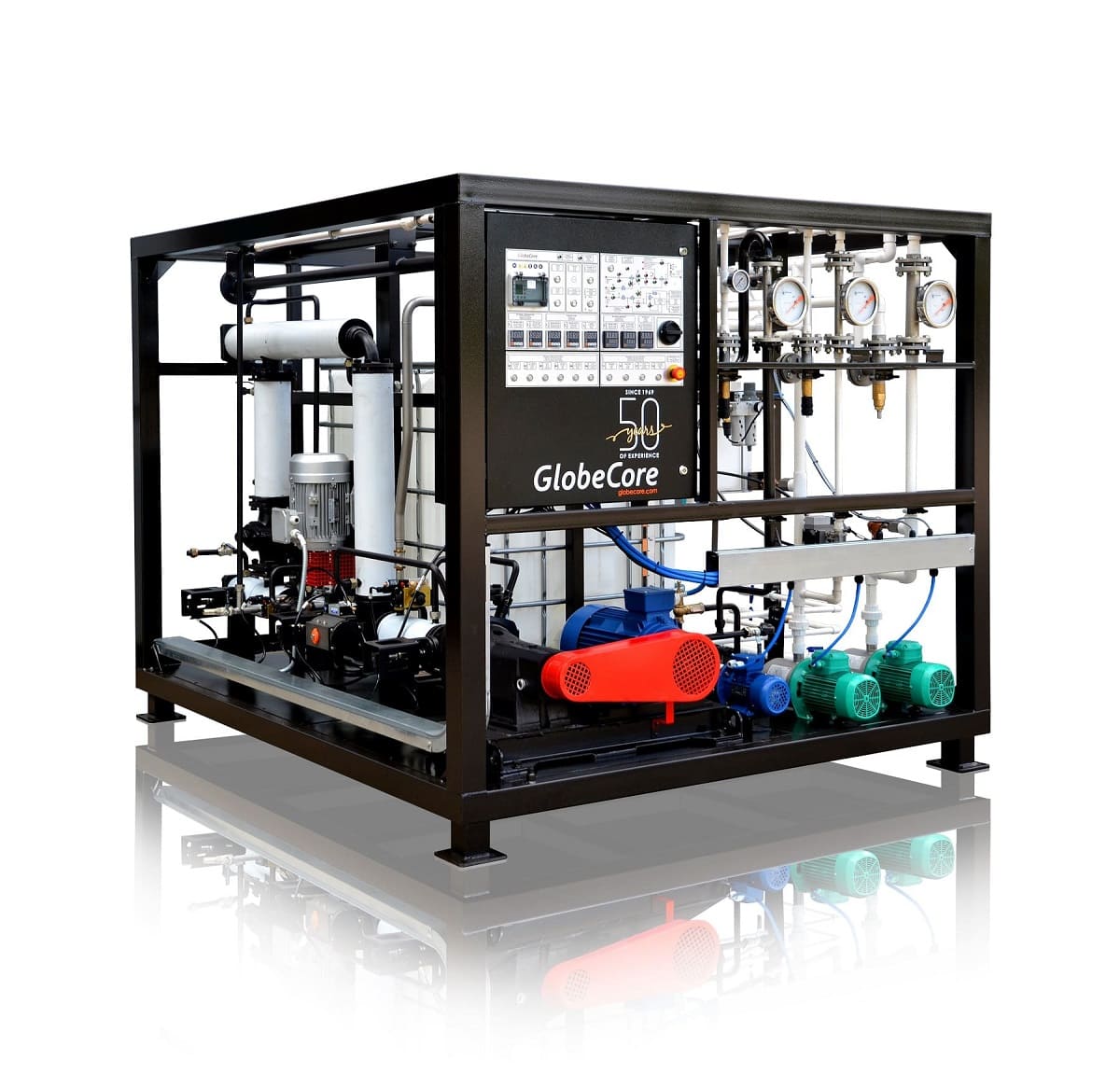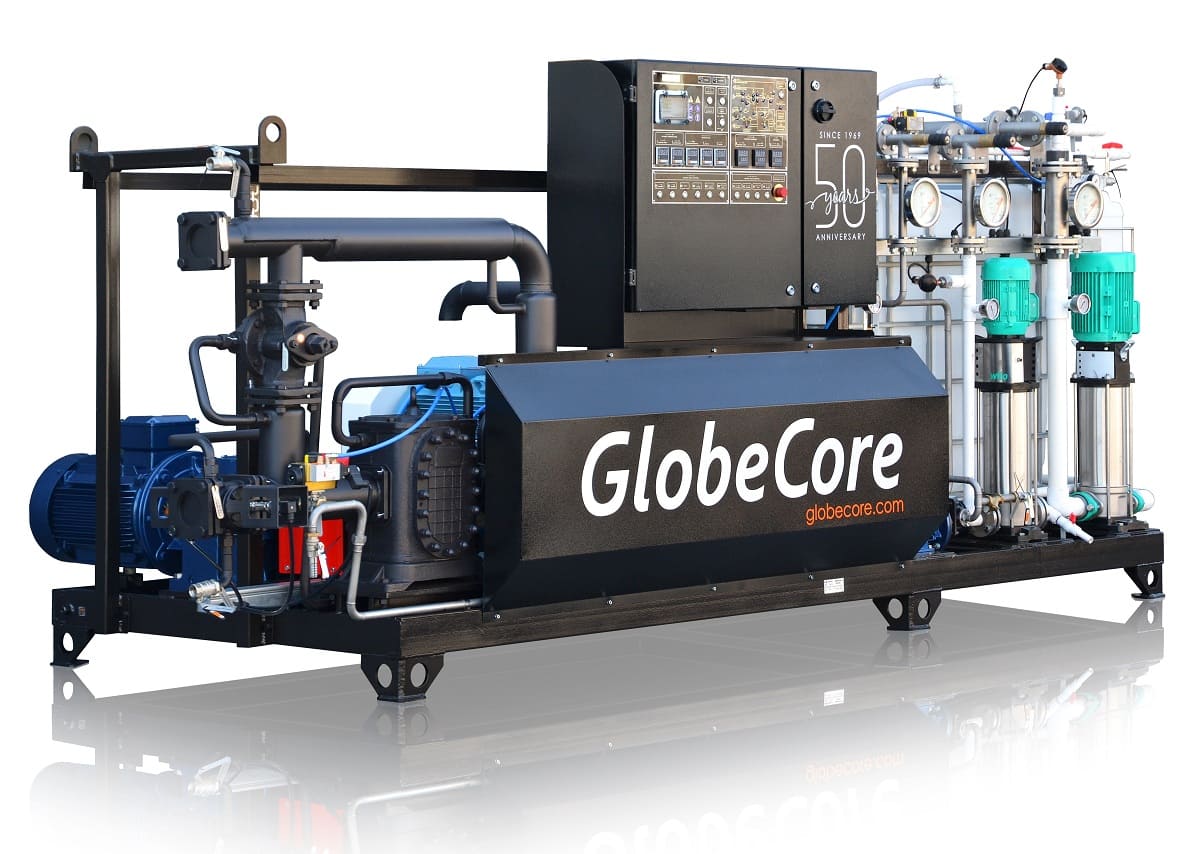In the process of emulsification, bitumen is dispersed into microscopic particles, while internal cohesion and viscosity of bitumen, as well as interfacial tension resist the formation of new phase boundary surface.
Bitumen particles tend to coalesce. To make a stable emulsion, it is necessary not only to apply mechanical forces correctly to make small enough particles, but also to prevent their aggregation afterwards.
The size of particles in the resulting emulsion may depend on the design of the mill, its rotation speed, the gap between the rotor and the stator, retention time, type and concentration of the surfactant and process temperature.
Bitumen viscosity during emulsification must not exceed 500 cSt. Viscosity is reduced by heating bitumen to 110 °С-160 °С before supplying it to the mill.
To improve solubility of the surfactant, the water phase is heated to 30 °С-70 °С. In emulsion units with no overpressure this temperature is limited to 100 °С, but in other equipment may reach 120 °С and higher. Systems with overpressure are necessary for solid bitumen or bitumen with a high degree of polymer modification.
The chemical nature of emulsifiers
The process of surfactant concentration (adsorption) on the phase boundary surface is due to the structure of its molecule, which has a hydrophilic structural group and a lipophilic radical. The molecules based on such substances as proteins, lignins, polymer and minerals may have one or more hydrophilic and lipophilic sections. On the surface between the phases, the molecule turns its lipophilic section to bitumen and the hydrophilic section to water.
To prevent coalescing of bitumen particles, they must not come in direct contact with each other. There are two ways to do this: ion surfactants charge the surface of the bitumen particles, and the similar charges repulse. Since the charge of some anionic and cationic surfactants depends on the pH, this equilibrium may be disrupted by changing it. Another stabilization mechanism is physical blocking of particles. This is possible by using finely dispersed powerds (clay) as surfactants. In this case the mixture is referred to as paste, as opposed to emulsion.
The surfactant molecule is much smaller than the bitumen molecule, and each bitumen droplet is stabilized by thousands of such molecules.
If we scale a bitumen droplet up to the size of the Earth, then each “section” of a surfactant molecule would have the area of 10 km2, while the lipophilic “tail” of the molecule would extent 8 km below the surface. Many cationic surfactants are supplied in a neutral form, insoluble in water. In this case, the cationic form of the surfactant is obtained by neutralizing with acid. For some anionic surfactants, alkaline neutralization is necessary. Even in the case of water-soluble surfactants, their efficiency also depends on the pH of the medium. Acidic emulsion are referred to as cationic, and alkaline emulsion are referred to as anionic.
Emulsion stabilization
The mechanism of emulsion stabilization depends on the nature of the hydrophilic groups of the surfactant. Using surfactants with large hydrophilic groups can prevent aggregation of bitumen particles by spacial repulsion. But the the most important factor is the formation of the same charges on the surfaces of bitumen droplets, causing electrostatic repulsion of such droplets in water.
Depending on the charge, surfactants are classified as anionic, cationic amphoteric and non-ionic. Charge value and sign can be measured and expressed as their electrokinetic potential. The values of the potentials depend on the pH of the media; emulsions with lower electrokinetic potentials (positive or negative) usually demonstrate low reactivity.


 USB-2 Bitumen emulsion ...
USB-2 Bitumen emulsion ... USB-2 Bitumen emulsion ...
USB-2 Bitumen emulsion ...